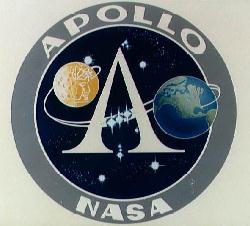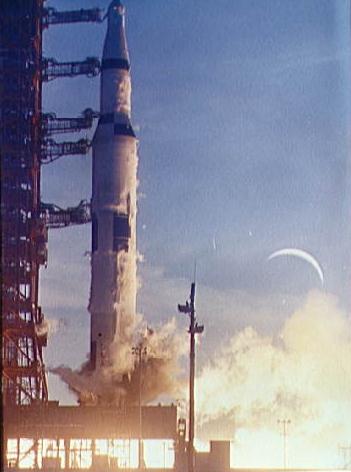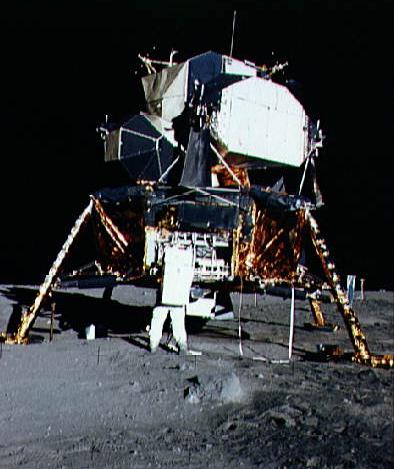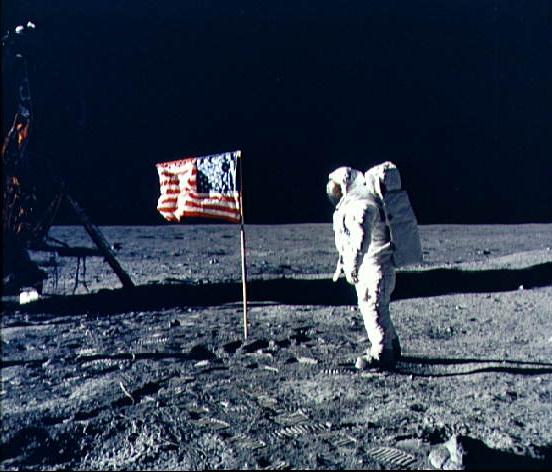 Apollo Program:
Apollo Program:
Project Apollo's goals went beyond landing Americans on the
Moon and returning them safely to Earth:
- To establish the technology to meet other
national interests in space;
- To achieve preeminence in space for the United
States;
- To carry out a program of scientific ex-
ploration of the Moon; and
- To develop man's capability to work in the
lunar environment.
 Apollo was a three-part spacecraft: the command module (CM), the
crew's quarters and flight control section; the service module (SM)
for the propulsion and spacecraft support systems (when together, the
two modules are called CSM); and the lunar module (LM). The CM and
LM would separate after lunar orbit insertion. One crew member would
stay in the CM, which would orbit the Moon, while the other two
astronauts would take the LM down to the lunar surface. After
exploring the surface, setting up experiments, taking pictures,
collecting rock samples, etc., the astronauts would return to the CM
for the journey back to Earth.
Apollo was a three-part spacecraft: the command module (CM), the
crew's quarters and flight control section; the service module (SM)
for the propulsion and spacecraft support systems (when together, the
two modules are called CSM); and the lunar module (LM). The CM and
LM would separate after lunar orbit insertion. One crew member would
stay in the CM, which would orbit the Moon, while the other two
astronauts would take the LM down to the lunar surface. After
exploring the surface, setting up experiments, taking pictures,
collecting rock samples, etc., the astronauts would return to the CM
for the journey back to Earth.
 Six of the missions (Apollos 11, 12, 14, 15, 16, and 17) landed
humans on the Moon and bought them safely back to Earth. Apollos 7
and 9 were Earth orbiting missions to test the Command and Lunar
Modules, and did not return lunar data. Apollos 8 and 10 tested
various components while orbiting the Moon, and returned photography
of the lunar surface. Apollo 13 did not land on the Moon due to a
malfunction, but also returned photographs. The six missions that
landed on the Moon returned a wealth of scientific data and almost
400 kilograms of lunar samples. Experiments included soil mechanics,
meteoroids, seismic, heat flow, lunar ranging, magnetic fields, and
solar wind experiments.
Six of the missions (Apollos 11, 12, 14, 15, 16, and 17) landed
humans on the Moon and bought them safely back to Earth. Apollos 7
and 9 were Earth orbiting missions to test the Command and Lunar
Modules, and did not return lunar data. Apollos 8 and 10 tested
various components while orbiting the Moon, and returned photography
of the lunar surface. Apollo 13 did not land on the Moon due to a
malfunction, but also returned photographs. The six missions that
landed on the Moon returned a wealth of scientific data and almost
400 kilograms of lunar samples. Experiments included soil mechanics,
meteoroids, seismic, heat flow, lunar ranging, magnetic fields, and
solar wind experiments.

Excerpt from the Encyclopedia Britannica without permission.




